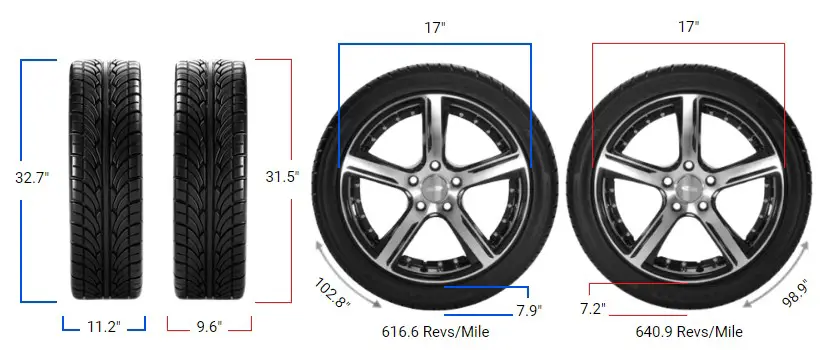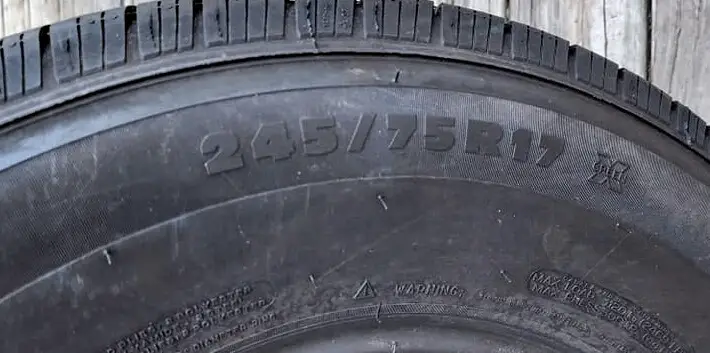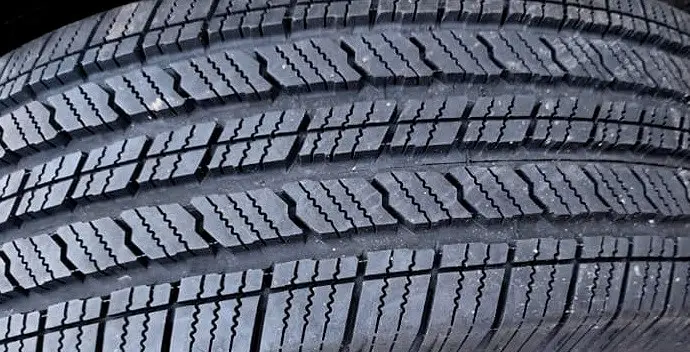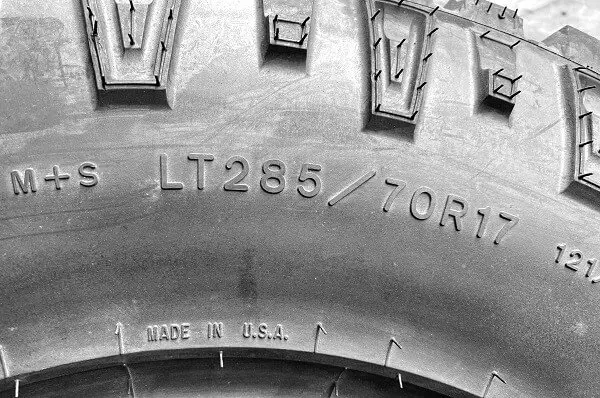Tire Size 285/70r17 vs 245/75r17

The main difference between 285/70R17 and 245/75R17 tire sizes is the tire’s Overall diameter. The 285/70r17 tire is 1.24 inches (31.5 mm) larger in diameter than the 245/75r17 tire.
This means the 285/70r17 tire will have a higher ground clearance and a larger contact patch, giving it better traction and handling in off-road conditions.
285/70r17 vs 245/75r17
This table compares tire sizes 285/70r17 and 245/75r17 for easier understanding of differences.

Fitment Guide
Replacement tires should be within 3% of the original tire’s overall diameter to avoid clearance issues or speedometer inaccuracies.
The overall diameter of the 285/70R17 is 3.8% larger than the 245/75R17. While the 285/70R17 may fit without modifications, larger tires like these may require a suspension lift or leveling kit to prevent rubbing at complete turn.
Ground Clearance
The 285/70R17, with a diameter of 32.71 inches, provides 1.24 inches more ground clearance than the 245/75R17 at 31.47 inches.
This added clearance is useful for off-road driving, helping prevent scrapes and damage from obstacles. However, the larger diameter also causes a lower speedometer reading for the 285/70R17 compared to the 245/75R17.

Gas Mileage
The 245/75R17, with its more minor contact patch and lower rotational mass, will likely provide slightly better fuel efficiency than the heavier 285/70R17.
This makes the 245/75R17 a good choice for daily driving and long trips where gas mileage is a priority.
Ride Comfort
While the 245/75R17 offers a smooth ride on pavement, the taller sidewall and greater air volume of the 285/70R17 absorb bumps better, resulting in superior comfort on uneven terrain.
This cushier ride reduces the harshness felt in the cabin when off-road.
Aesthetics
Visually, the difference between these sizes is subtle. The 285/70R17 has a slightly taller sidewall, giving it a “stretched” look compared to the 245/75R17.
This aesthetic suits trucks and SUVs well. However, the lower profile 245/75R17 contributes to a smoother, more aerodynamic appearance.

Handling & Stability
The 245/75R17 shorter sidewall enables sharper handling and quicker response on paved roads.
In contrast, the 285/70R17 extra sidewall flex reduces handling precision a bit but provides added stability and traction off-road or on uneven ground.
Noise & Vibration
With its shorter, stiffer sidewall, the 245/75R17 transmits more road noise and vibration into the cabin. The extra flex of the 285/70R17 sidewall dampens noise and vibration better for a more comfortable ride.
Durability & Wear
The potential for even treadwear and longer life is higher with the 245/75R17. The larger 285/70R17 can withstand more impacts, but its added weight could increase wear on suspension components.

Adverse Conditions
In snow and ice, the 245/75R17 narrower footprint can cut through to the pavement more easily.
But the 285/70R17 provides better traction in specific off-road conditions where a wider, grippier tread is advantageous. Both handle rain well.
Speedometer Reading
At an actual speed of 20 mph, the speedometer reads 20 mph with 285/70R17 tires equipped.
But with 245/75R17 tires, the speedometer reads 19.24 mph at the same actual 20 mph speed. This 0.76 mph speedometer difference should be considered.
What is the Main Difference Between 285/70R17 and 245/75R17?
The main difference between 285/70R17 and 245/75R17 tires is the overall diameter. The 245/75R17 tires are about 1.24 inches (31.5 mm) or 3.8% smaller in diameter compared to the 285/70R17 size.
Can I Use 245/75R17 Instead of 285/70R17?
While you could use 245/75R17 tires instead of 285/70R17, it’s not ideal. The 3.8% difference in diameter exceeds the recommended range of 3%, which can negatively impact vehicle performance and handling. Modifications may be necessary.
How Much Taller Is a 285/70R17 Tire Than a 245/75R17?
A 285/70R17 tire is approximately 1.24 inches (31.5 mm) taller than a 245/75R17 tire, which equates to the 245/75R17 tire being 3.8% smaller in overall diameter.

How Much Wider is a 285/70R17 Tire Than a 245/75R17?
A 285/70R17 tire is 1.57 inches (40 mm) wider than a 245/75R17 tire. This is a significant 14% difference in width.
Our Observation
The 285/70R17 and 245/75R17 sizes differ primarily in overall diameter, which impacts ground clearance, appearance, speedometer accuracy, and off-road capability.
For a blend of on-road comfort and off-road versatility, the moderately sized 285/70R17 is a good choice.
However, the 245/75R17 excels for responsive handling, efficiency, and pavement performance. Understanding these differences allows you to select the best tire for your needs.

Meet Caitlin McCormack, a Tire Size Expert and Blogger Passionate About Everything Related to Tires. With Years of Experience in the Tire Industry, Caitlin Has Become an Expert in Tire Sizes and Their Impact on Vehicle Performance.
